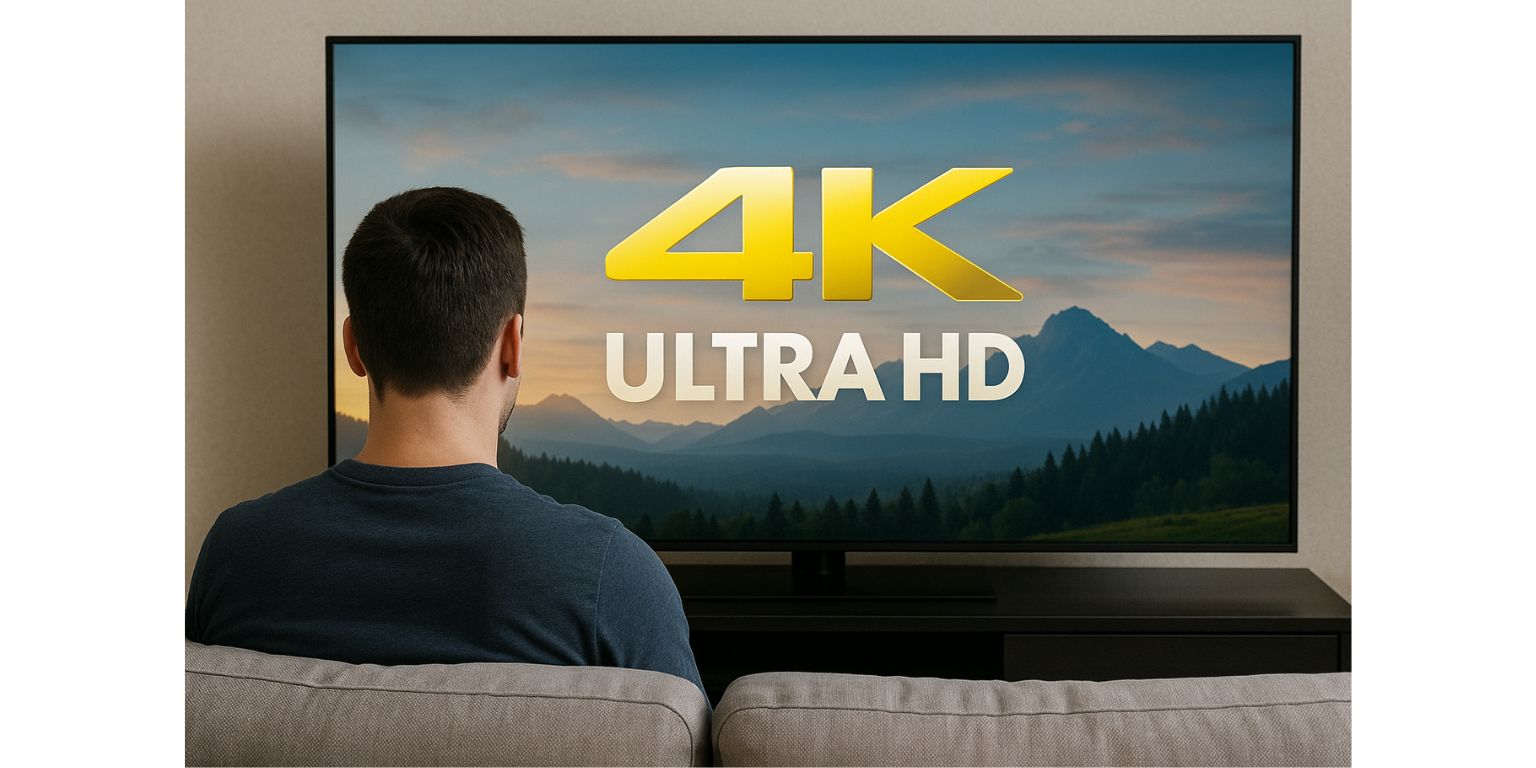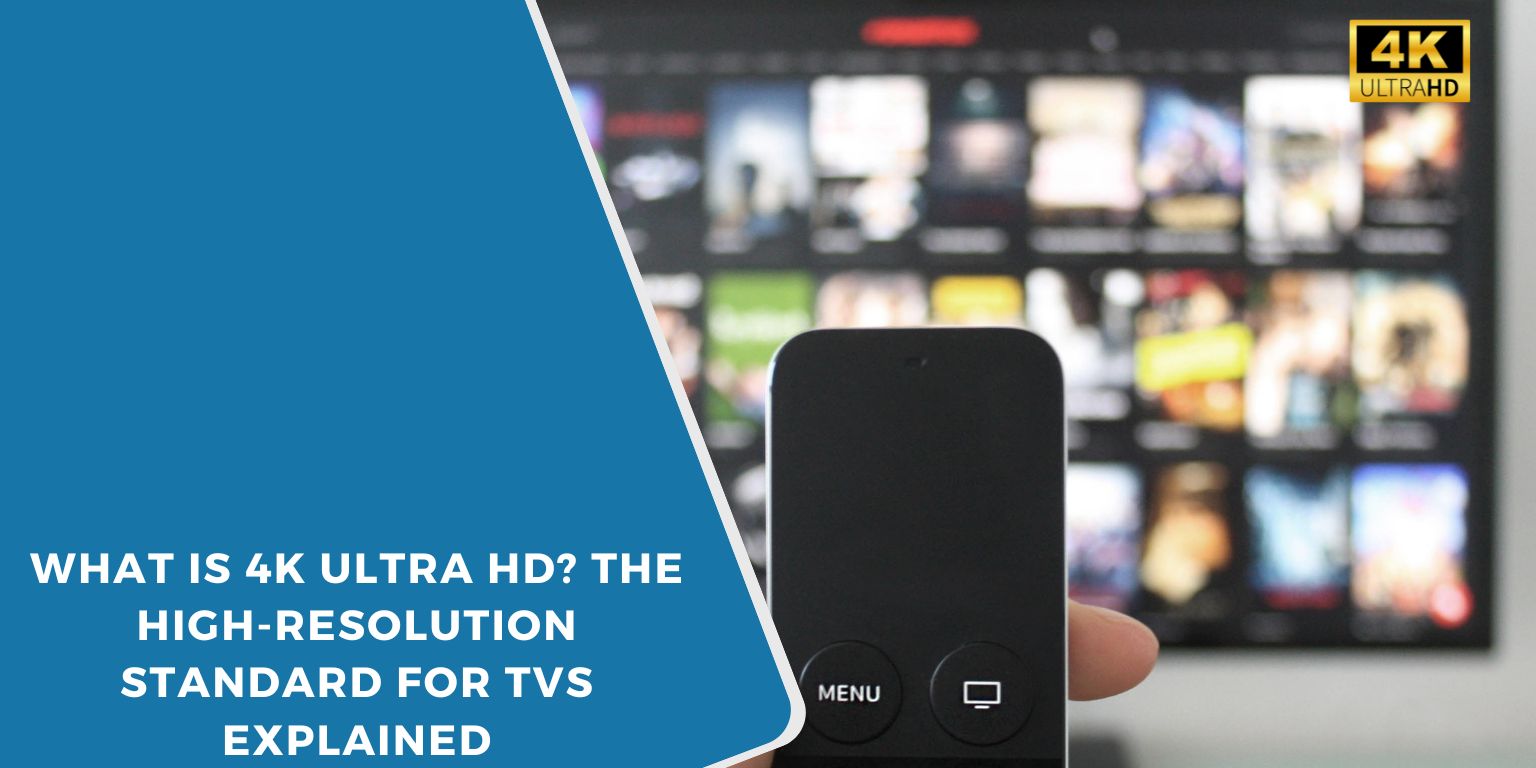Everywhere you look—TV ads, Netflix shows, or YouTube videos—you’ll see the words “4K Ultra HD.” For anyone thinking about upgrading their TV or streaming device, it’s a term that can be confusing. Does it really mean better picture quality? How is it different from regular HD or Full HD?
This article is written to give you a clear answer. We’ll break down what 4K Ultra HD means, how it compares to older resolutions, what you need to watch it, and whether it’s worth buying a 4K TV.
What Does 4K Ultra HD Mean?
4K Ultra HD (often shortened to 4K UHD) refers to a screen resolution of 3840 x 2160 pixels. That’s about 8.3 million pixels in total. To put it simply, the higher the pixel count, the sharper and more detailed the image.
The name “4K” comes from the fact that the horizontal resolution is close to 4,000 pixels wide. In the film industry, “true cinema 4K” is slightly larger at 4096 x 2160, but for consumer TVs, 3840 x 2160 is the standard.
Ultra HD (UHD) is the marketing term used by TV makers to describe this resolution. When you see “4K UHD” on a box, it’s usually the same thing: a 3840 x 2160 display.
4K vs. Full HD: What’s the Difference?
For many years, Full HD (1080p) was the standard, with 1920 x 1080 pixels. That’s about 2 million pixels. Compare that with 4K Ultra HD’s 8.3 million pixels, and you’re getting four times the detail.
Here’s a quick comparison:
| Resolution | Pixel Count | Common Name |
|---|---|---|
| 1920 x 1080 | ~2 million | Full HD (1080p) |
| 3840 x 2160 | ~8 million | 4K Ultra HD |
The difference is most visible on larger screens. A 55-inch or 65-inch TV looks much sharper in 4K, where individual pixels are almost impossible to spot compared to 1080p.
Where Can You Watch 4K Content?
 A 4K TV alone doesn’t guarantee a sharper picture—you need 4K content. Luckily, it’s widely available today:
A 4K TV alone doesn’t guarantee a sharper picture—you need 4K content. Luckily, it’s widely available today:
- Streaming platforms: Netflix, Disney+, Amazon Prime Video, Apple TV+, YouTube
- Physical media: Ultra HD Blu-ray discs
- Live sports and broadcasts: Available in select regions, especially for big events like the Olympics
- Gaming: PlayStation 5, Xbox Series X, and high-end gaming PCs all support 4K gaming
Many services also combine 4K with HDR (High Dynamic Range) for better brightness and color detail.
Devices That Support 4K Ultra HD
Most new TVs today are 4K by default, from brands like Samsung, LG, and Sony. But it doesn’t stop there.
- Projectors now offer 4K playback for home theaters.
- Monitors support 4K for design, editing, and gaming.
- Streaming devices like Apple TV, Roku, Chromecast, and Amazon Fire TV Stick support 4K streaming.
- Consoles (PS5, Xbox Series X) are built with 4K as a standard.
To get the best out of these, make sure you’re using HDMI 2.0 or HDMI 2.1 cables, which handle the higher bandwidth required for 4K at smooth refresh rates.
Benefits of 4K Ultra HD
Why should you upgrade to 4K? Here are the main benefits:
- Sharper detail – Images look crisp, even on 65-inch or larger screens.
- Better immersion – Perfect for gaming and movies.
- Future-proof – 4K is now the standard; most new content is made for it.
- HDR support – Many 4K TVs add HDR for brighter highlights and richer colors.
The difference isn’t always night and day on smaller screens, but for bigger TVs or projectors, 4K makes a huge impact.
Do You Need Special Equipment for 4K?
To enjoy 4K fully, you need a few things in place:
- Internet speed: At least 15–25 Mbps for smooth 4K streaming.
- HDMI cables: HDMI 2.0 or above.
- Compatible devices: A 4K-ready TV, console, or streaming box.
- Streaming subscription: Some platforms like Netflix charge extra for 4K plans.
If any of these are missing, your 4K TV might just show upscaled 1080p instead of true 4K.
4K vs. 8K: Should You Wait?
You might hear about 8K TVs, which pack even more pixels: 7680 x 4320. That’s four times the detail of 4K. But here’s the catch—there’s almost no 8K content yet.
For most people, 4K is the sweet spot right now. It’s widely supported, affordable, and looks amazing on large screens. 8K may become mainstream in the future, but it’s not worth waiting for today.
Conclusion: Is 4K Worth It?
4K Ultra HD means sharper resolution, more detail, and a better viewing experience. It’s supported by nearly all new TVs, streaming services, and consoles. If you’re upgrading your home setup, 4K is no longer a luxury—it’s the standard.
Whether you’re watching movies, sports, or gaming, 4K Ultra HD makes everything look more lifelike. And with so much content already available, upgrading to 4K is a smart move for anyone who cares about picture quality.


